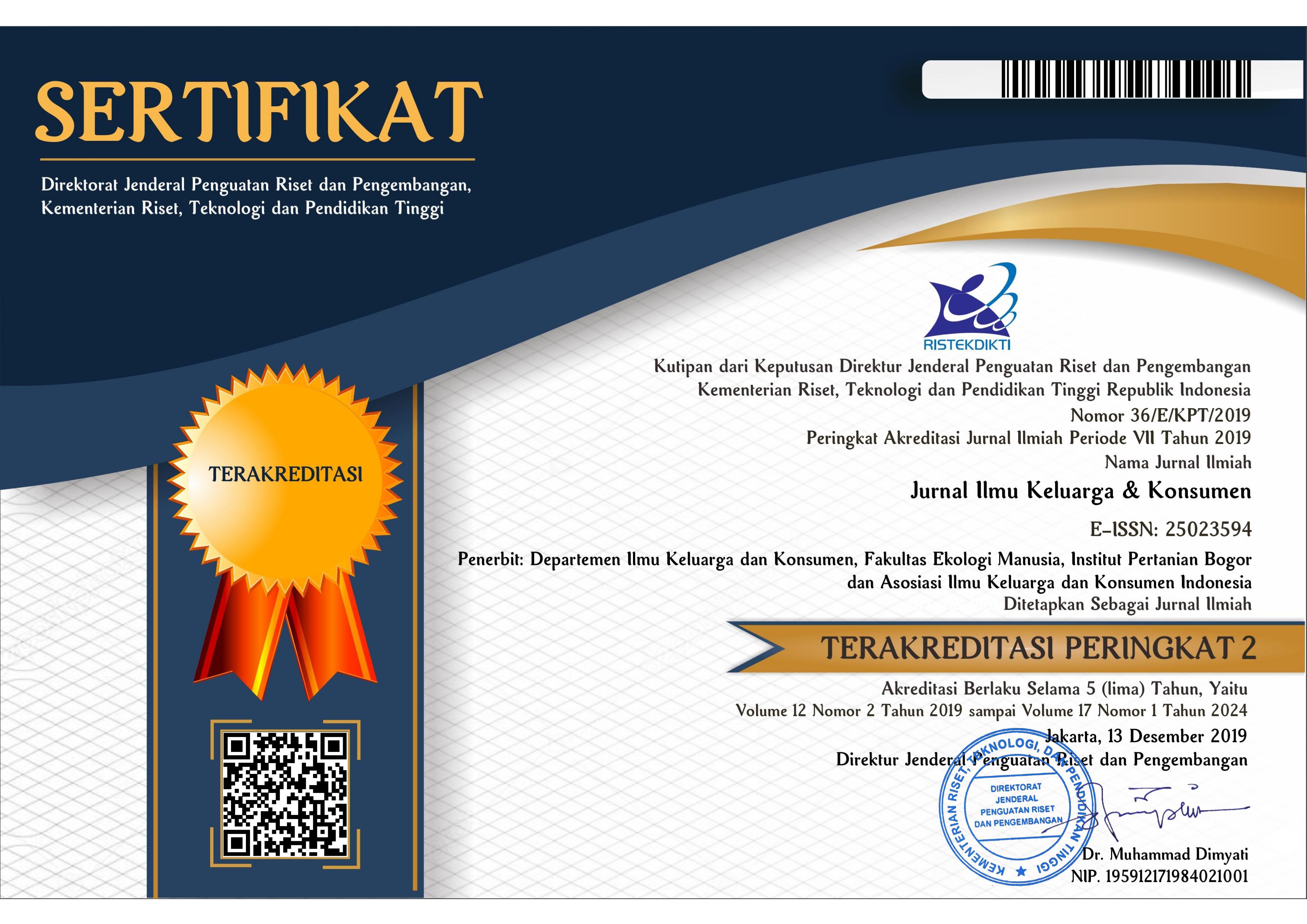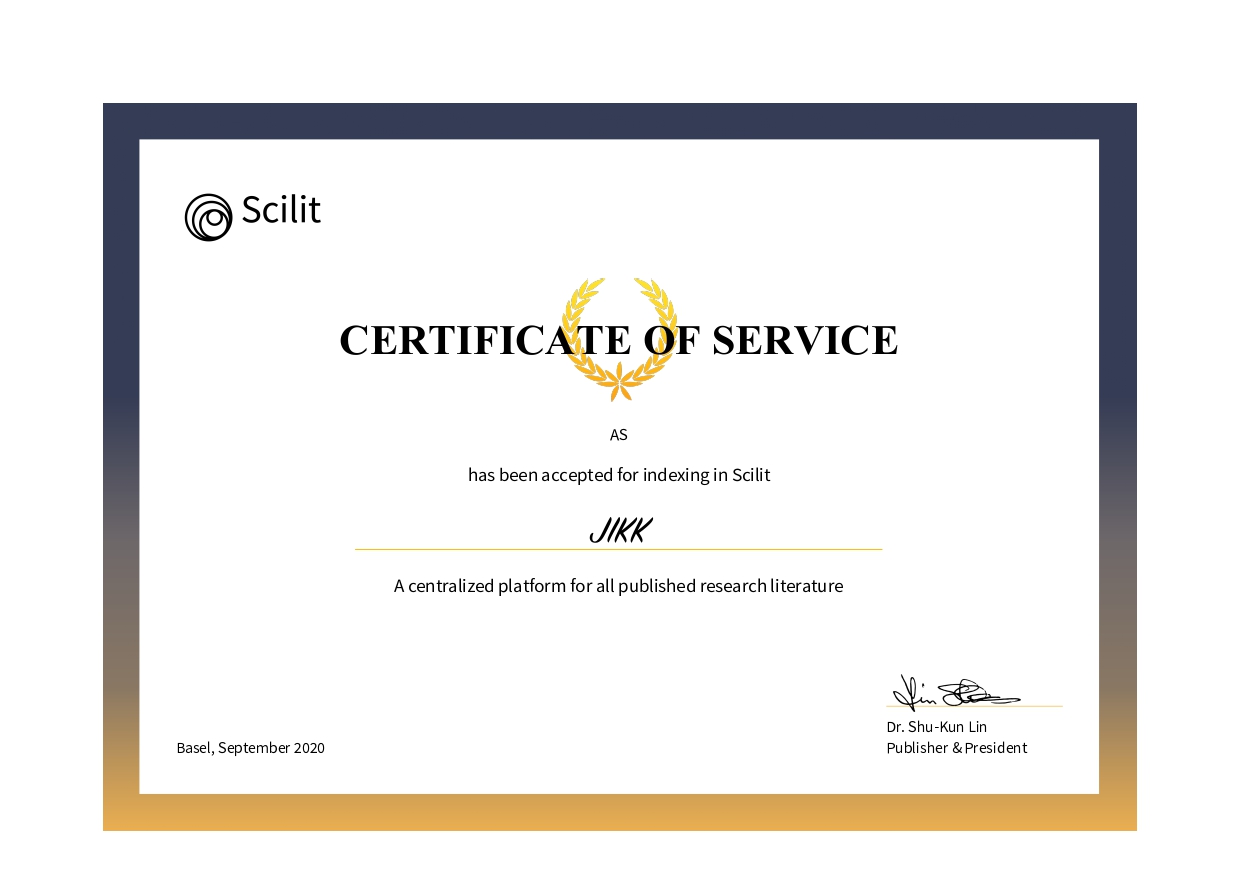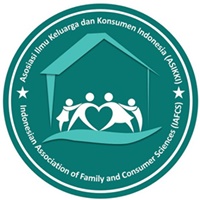ANALISIS PERILAKU KOMPLAIN KONSUMEN ONLINE SHOPPING
Abstract
Online business has a strong role to meet consumer need but this business still has limitation so cause increasing of complaint behavior. This study aims to analyze the influence of the quality of online product and service on consumer complaint behavior and its relation with consumer’s personality. The study used cross sectional desaign with online survey. Respondents were 161 college student of 17-22 years old and chosen by purposive sampling based on the criteria of having experienced dissatisfaction in online shopping in the past year. Data were analyzed descriptively and SEM (Structural Equation Modelling) with Smart-PLS software. The result show that consumer dissatisfaction is caused by product defect, delivery time, and product deliver failed. Fashion and cosmetic categories have the highest level of dissatisfaction. Online shopping consumers have various ways to respond to dissatisfaction including passive (34.0%), (voicer 40.0%), iratest (25.0%), and activists (1.0%). Consumer complaint behavior is positively and significantly influenced by perceived quality (product and service) and personality. It means that the higher level of defect in product and service perceived by customers, the higher level of complains that consumers will make. Furthermore, consumer personality characteristics of extraversion and openness to experience are more likely to complaint if there is an error in product or service.
References
[APJII] Asosiasi Penyelenggara Jasa Internet Indonesia. (2017). Survei asosiasi penyelenggara jasa internet Indonesia. Diakses 6 Agustus 2018. Tersedia pada http://www.apjii.or.od.
Aaker, D. A. (1997). Manajemen ekuitas merek, alih bahasa: Aris Ananda. Jakarta (ID): Spektrum Mitra Utama.
Ahn, T., Ryu, S., & Han, I. (2004). The impact of the online and offline features on the user acceptance of Internet shopping malls. Electronic Commerce Research and Applications, 3(4), 405–420. doi:10.1016/j.elerap.2004.05.001.
Bayraktar, E., Tatoglu, E., Turkyilmaz, A., Delen, D., Zaim, S. (2012). Measuring the efficiency of customer satisfaction and loyalty for mobile phone brands with DEA. Expert Syst Appl, 39(1), 99–106.
Berry, R. A. (2013). How we complain: the effect of personality on customer complaint channels (Tesis). University of Nevada, Las vegas, United State.
Cao, Y., Haya, A., & Paul, H. (2017). Post-purchase shipping and customer service experiences in online shopping and their impact on customer satisfaction: an empirical study with comparison. Asia Pacific Journal of Marketing and Logistics, 30(2), 400-416. doi: 10.1108/APJML-04-2017-0071.
Cho, Y., II, Im., Roxanne, H., & Jerry, F. (2003). The impact of product category on customer dissatisfaction in cyberspace. Business Process Management Journal, 9(5), 635-651.
Cho, Y., II, Im., Roxanne, H., & Jerry, F. (2002). The effects of postpurchase evaluation factors on online vs offline customer complaining behavior: implication for customer loyalty in NA. Advances in Customer Research, 29: 318-326.
Crie, D. (2003). Consumers compliant behaviour taxonomy, typology and determinants: towards a unified ontology. Database Marketing & Customer Strategy Management, 11(1), 60-79.
Donoghue, S., & Klerk, H. M. (2006). Dissatisfied customer complaint behaviour concerning product failure of major electrical household appliances–a conceptual framework. Journal of Family Ecology and Consumer Sciences, 34, 41-55.
Daily socialid. (2016). Laporan customer satisfaction in indonesia’s e-commerce service tahun 2016, Diakses 2 Juli 2018. Tersedia pada http://www.dailysocial.id.
Davidow, M. (2000). The bottom line impact of organizational responses to customer complaints. Jurnal of Hospitality & Tourism Research, 24(4), 473-490, doi :10.1177/109634800002400404.
Ekinci, Y., Calderon, J., & Siala, H. (2016). Do personality trait predict complaining customer?. Journal of Business Environment, 8(1), 32-42.
Fonseca, F., Sofia, P., Carlos, B. (2010). Service quality and customer satisfaction in public transports. International Journal for Quality research, 4(2), 125-130.
Hair, R., Black, W., Babin, B., Anderson, R., Tarham, R. (2006). Multivariate data analysis Ed 5th. New Jersey, NJ: Pearson Prentice hall.
Halstead, D., & Droge, C. (1991). Customer attitudes toward complaining and the prediction of multiple complaint responses. Advances in Consumer Research,18(1), 210-216.
Harris, E.G., & Mowen, J. C. (2001). The influence of cardinal central and surface level personality traits on consumers bargaining and complaint intentions. Psychology & Marketing, 18(11), 1155–1185.
Hwang, J., & Zhao, J. (2010). Factors influencing customer satisfaction or dissatisfaction in the restaurant business using answer tree methodology. Journal of Quality Assurance in Hospitality & Tourism, 11(2), 93-11. doi: 10.1080/15280081003800355.
Jessie, C. Y., Jihyun, Kim., & Hsiao-Ling, L. (2017). Antecedents of product satisfaction and brand satisfaction at product receipt in an online apparel shopping context. Journal of Global Fashion Marketing, 8(3), 207-219. doi: 10.1080/20932685.2017.1298460.
Kim, M. G., Lee, C. H., & Mattila, A. S. (2014). Determinants of customer complaint behavior in restaurant context: The role of culture, price level, and customer loyalty. Journal of hospital marketing and management, 23(8), 885-906. doi.org/10.1080/19368623.2014.896762.
Kim, J., & Boo, S. (2011). Influencing factors on customer intention to complaint in a franchise restaurant. Journal of Hospitality Marketing & Management, 20(2), 217-237. doi.10.1080/19368623.2010.514559.
Kotler & Keller. (2009). Manajemen Pemasaran Jilid I edisi 13. Jakarta (ID): Erlangga.
Krisno, D., & Samuel, H. (2013). Pengaruh perceived quality, perceived sacrifice dan perceived value terhadap customer satisfaction di Informa innovative furnishing Pakuwon City Surabaya. Jurnal Manajemen Pemasaran Petra, 1(1), 1-12.
Latan, H., & Ghozali, I. (2012). Partial least squares, konsep, teknik, dan aplikasi SmartPLS 2.0 M3 untuk penelitian empiris. Semarang (ID): Universitas Diponegoro.
Malik, S. (2012). Customer satisfaction, perceived quality and mediating role of perceived value. International Journal of Marketing studies, 4(1), 68-76.
Ndubisi, N. O., & Ling, T. Y. (2006). Complaint behaviour of Malaysian customers. Management research News, 29(1/2), 65-76. doi.10.1108/01409170610645457.
Phau, I., & Sari, R. P. (2004). Engaging in complait behavior: an Indonesian perspective. Marketing Intelligence & Palnning, 22(4), 407-426.
Putri, C. P. (2014). Analisis faktor-faktor yang mempengaruhi komplain pelanggan pada educotourism “kampung jamu jeng ratu Indonesia (Tesis). Institut Pertanian Bogor, Bogor, Indonesia.
Prasetya, A., Hartoyo., & Tinaprila, N. (2016). Behavior analysis of consumer complaint. Indonesian Journal of Business and Entrepreneurship, 2(2), 101-111, doi: 10.17358/IJBE.2.2.101.
Quareshi, G. K. T. (2015). Factors obstructing intentions to trust and purchase products online. Asia Pacific Journal of Marketing and Logistics, 27(5), 758-783. doi: 10.1108/APJML-10-2014-0146.
Ramadhani, H. S. (2014). Pengaruh product quality, service quality dan perceived value terhadap kepuasan dan loyalitas konsumen SOP durian XYZ. (Tesis). Institut Pertanian Bogor, Bogor, Indonesia.
Shafiee, M. M., & Bazargan, N A. (2017). Behavioral customer loyalty in online shopping: the role of e-service quality and e-recovery. Journal of theoretical and applied electronic commerce research, 13(1), 27-38.
Shergil, G. S., & Chen, Z. (2005). Web-based shopping: consumers’ attitudes towards online shopping in New Zealand. Journal of Electronic Commerce Research, 6(2), 78-94.
Simanjuntak, M., & Hamimi, U. K. 2019. Penanganan komplain dan komunikasi Word-Of-Mouth (WOM). Jurnal Ilmu Keluarga dan Konsumen, 12(1), 75-86. http://dx.doi.org/10.24156/jikk.2019.12.1.75.
Sweeney, J. C., & Soutar, G. N. (2001). Consumer perceived value: the development of a multiple item scale. Journal of Retailing, (77), 203–220.
Thogersen, J., Juhl, H. J., & Poulsen, C. S. (2009). Complaining: a function of attitude, personality, and situation. Psychology & Marketing, 26(8), 760–77. doi: 10.1002/mar.20298.
Tronvoll, B. (2008). Customer complaint behavior in service (Disertasi). Karlstad University Studies, Karlstad, Swedia.
Velazquez, B. M., Blasco, M. F., Saura, I. G., Contri, G. B. (2010). Cause for complaining behaviour intention: the moderator effect of previous customer experience of the restaurat. Journal of Services Marketing, 24(7), 532–545.
Zeithaml, V. A., Bitner, M. J., & Gremler, D. D. (2009). Service marketing 5th edition. New York (US): Mc-Graw Hill.
Copyright (c) 2019 Jurnal Ilmu Keluarga & Konsumen

This work is licensed under a Creative Commons Attribution-ShareAlike 4.0 International License.
Authors submitting manuscripts should understand and agree that copyright of manuscripts published are held Jurnal Ilmu Keluarga dan Konsumen. The statement to release the copyright to Jurnal Ilmu Keluarga dan Konsumen is stated in Copyright Release Form. Copyright encompass exclusive rights to reproduce, to distribute, and to sell any part of the journal articles in all form and media. The reproduction of any part of this journal is allowed with a written permission from Jurnal Ilmu Keluarga dan Konsumen.










